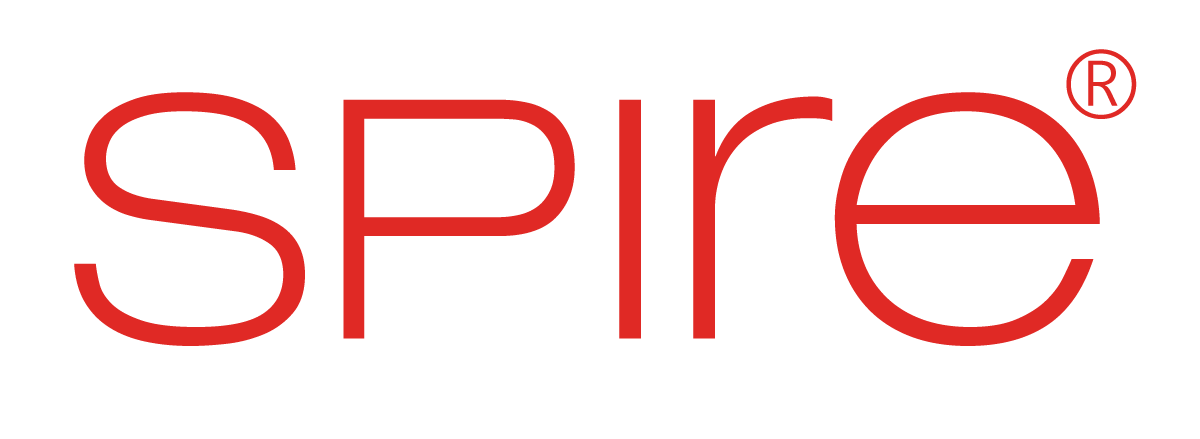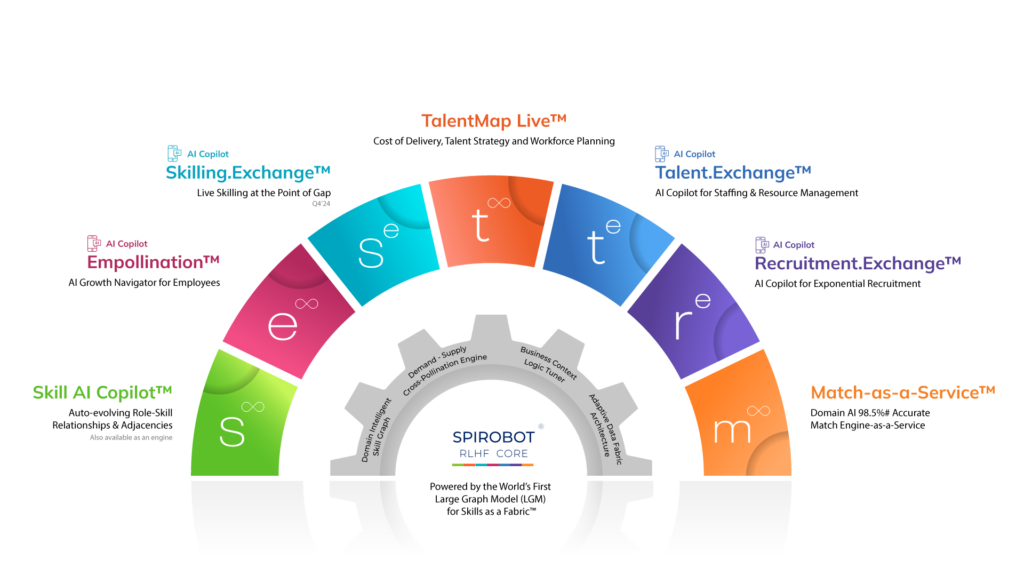The modern workforce is constantly changing. With the rise of automation and technological advancements, the skills needed to succeed continuously evolve. This presents a significant challenge – how can you manage your talent pool while keeping pace with these changes?
Here’s where data-driven talent management comes in. Organizations can make informed decisions about talent acquisition, development, and deployment by leveraging data on skills and competencies. But to truly unlock the power of this data, we need a robust framework for understanding and classifying skills. This is where skills ontologies and auto-evolving role-skill frameworks emerge as powerful tools.
This blog post explores the concepts of skill ontologies and auto-evolving role-skill frameworks, their functionalities, and how they can empower data-driven talent management strategies.
What is a Skills Ontology?
A skills ontology is a systematic way of organizing and understanding people’s skills. It’s like a map of skills, showing how they connect and relate to each other. Instead of listing random skills, it tells you if skills are similar (like communication and public speaking) or if one helps with another (like accounting and spreadsheets).
This knowledge of the relationship between skills allows companies to figure out what skills they need for jobs, what skills their employees already have, and where any gaps might be. It’s like a matching game, ensuring the right skills are in the right place.
How does a Skills Ontology Work?
A skills ontology is an organized list of skills in a company, but what makes it powerful is how it shows connections. It maps the skills needed for each job and how different skills relate to each other. This helps businesses hire better, train employees smarter, and minimize skill gaps.
Skills ontologies typically consist of the following.
Classes: These represent broad categories of skills (e.g., communication skills, technical skills, soft skills).
Subclasses are more specific categories within classes, like public speaking and written communication in the communication skills class.
Properties: These define relationships between skills (e.g., “requires,” “precedes”)
By using standardized terminology and establishing relationships, skills ontologies enable organizations to:
Standardize skill descriptions: This ensures everyone uses the same language when describing skills, facilitating communication and analysis.
Identify skill gaps by comparing the skills needed for a specific role with an individual’s current skill set. This will help organizations pinpoint areas that need further development.
Match skills to roles: Ontologies help match individuals with the right roles based on their skill profiles.
Difference between Skills Taxonomy & Skills Ontology
Both skill taxonomies and ontologies are ways to organize and classify skills but differ in detail and flexibility.
A skill taxonomy categorizes skills in a hierarchy. It begins with general categories at the top and then breaks down into more specific skills below. A skill ontology defines connections between skills rather than just using a hierarchical structure.
This means skills ontologies go beyond simply categorizing skills. They deepen our understanding of how different skills relate to each other, which can help us identify patterns and relationships that may not be obvious at first glance.
While similar, skills taxonomies and skills ontologies have vital differences, as listed below.
|
Feature |
Skill Taxonomies |
Skill Ontologies |
|
Complexity |
Simpler, hierarchical structures |
Taxonomies need to be more flexible and may need help to adapt to new skills |
|
Flexibility |
More complex, capturing relationships between skills |
Ontologies can evolve to incorporate new skills and relationships |
The Relevance of a Skills Ontology in Talent Management
Skills ontologies offer several benefits for talent management, including:
Improved talent acquisition: By clearly defining skills required for roles, organizations can attract better-matched candidates
Practical skills development: Ontologies can guide training programs by highlighting the specific skills needed for different roles.
Enhanced career development: Individuals can use ontologies to identify skill gaps and plan their career paths.
Better workforce planning: Analyzing skills data through ontologies helps organizations predict future skill needs and make informed talent decisions.
Limitations of Skills Ontologies
While skills ontologies offer a powerful tool for understanding and managing workforce capabilities, they come with some limitations, as listed below.
Complexity: Developing and maintaining a skills ontology can be a complex task. It requires careful consideration of the specific skills relevant to your organization and the relationships between those skills. This can be time-consuming and require ongoing effort, especially as the skills landscape evolves.
Nuance: There is a risk of making a strict classification system that only covers a small range and level of various skills. The ontology may categorize “data analysis” and “machine learning” as separate entities. This overlooks the vital role data analysis plays in the foundation of machine learning.
Subjectivity: The process of defining and classifying skills can involve subjective interpretations. This can lead to consistency and make comparing skills across different departments or roles difficult.
Maintenance: The world of work is constantly changing, and new skills are always emerging. You need to update a skills ontology to reflect these changes regularly. This requires ongoing effort and resources.
Auto-evolving role-skill frameworks offer a flexible and data-driven solution for managing skills in a company.
They automatically update to reflect changes in skills and roles within the company.
This approach provides a more efficient way to ensure employees have the necessary skills.
No Standardization: There’s no single universal standard for skills ontologies. This can make it difficult to share information or collaborate with other organizations that use different systems.
Auto-evolving role-skill frameworks offer a flexible and data-driven solution for managing skills in a company. These frameworks can help solve problems related to skill management. They automatically update to reflect changes in skills and roles within the company. This approach provides a more efficient way to ensure employees have the necessary skills.
What are Auto-Evolving Role Skill Frameworks?
Auto-evolving role-skill frameworks are systems that use artificial intelligence to update a company’s job skills. These frameworks constantly adapt to changing job requirements and ensure employees have the necessary skills.
The systems use AI to analyze job trends and update skill requirements accordingly. They function as a central hub for all things related to skills and roles.
Spire.AI Copilot for Talent provides an auto-evolving role-skill framework tailored specifically for your organization. This framework relies on the world’s largest LGM for skills and can adapt to changing business contexts.
Difference Between Skill Ontology and Auto-Evolving Role-Skill Framework
A skills ontology organizes skills. An auto-evolving role-skill framework focuses on how roles change in relation to skills.
|
Skills Ontology |
Auto-Evolving Role-Skill Framework |
|
Provides a stable foundation for classifying skills and their relationships. |
Adapts to changing industry needs and continuously updates the skills required for specific roles. |
Why are Auto-Evolving Role-Skill Frameworks Essential for a Dynamic Market?
The modern job market is constantly evolving. New technologies emerge, and job descriptions adapt accordingly. In today’s rapidly changing business landscape, traditional, static role-skill frameworks need help to keep pace. Here’s why auto-evolving frameworks are becoming essential –
Evolving Skill Needs: New technologies and changing customer demands mean the skills needed for success in a role are constantly in flux. Auto-evolving frameworks can adapt to these changes, ensuring your organization identifies and seeks the most relevant skills for current and future needs.
Data-Driven Decisions: These frameworks leverage data (like job postings and industry trends) to identify in-demand skills. This data-driven approach helps organizations make informed decisions about talent acquisition, development, and deployment.
Talent Optimization: Organizations can optimize their talent pool by clearly identifying employee skill sets and evolving role requirements. This means identifying internal talent with the right skills for new opportunities and creating targeted reskilling programs to bridge skill gaps.
Improved Talent Acquisition: Auto-evolving frameworks can streamline recruitment by ensuring job descriptions and screening processes reflect the most relevant skills. This can lead to faster hiring and attracting a wider pool of qualified candidates.
Employee Engagement: When employees feel their skills are valued and there are clear paths for development, engagement, and retention boost. Auto-evolving frameworks can personalize career development plans, empowering employees to grow alongside the organization’s needs.
In essence, auto-evolving role-skill frameworks provide a dynamic and adaptable approach to talent management in a constantly changing market. This ensures your organization has the right skills at the right time to thrive in a competitive environment.
Best Practices for Building a Strong Skills Foundation
Here are some best practices for building a strong skills foundation for your organization:
▶ Conduct a Skills Gap Analysis
▷ Prioritize In-Demand Skills
▶ Create a Culture of Learning
▷ Personalize Career Paths
▶ Variety of Learning and Development Options
▷ Provide Opportunities for Skill Application
▶ Measure and Track Progress
▷ Recognize and Reward Skill Development
▶ Encourage Knowledge Sharing
Conduct a Skills Gap Analysis
Identify your workforce’s current skills and the skills required for success in your industry. This can involve employee skills assessments, surveys, and reviewing job postings for similar roles.
Spire.AI Copilot for Talent utilizes auto-evolving role-skill frameworks and Generative Skills AI to create a solid skills framework for any organization. This framework is domain-intelligent and powered by the world’s largest Large Graph Model (LGM) for skills. It considers the current roles and their corresponding skills and keeps updating this role-skill framework over time.
It utilizes this framework to auto-generate all-round employee skill profiles and quickly identify skill gaps. Further, it automatically creates personalized learning paths for employees to upskill and reskill based on skill gaps. This helps you eliminate the procedures of lengthy skills assessments and surveys and consistently carry out a skill gap analysis for your organization.
Prioritize In-Demand Skills
Focus on building skills critical for your organization’s current and future goals. Consider industry trends, your organization’s goals, technological advancements, and competitive landscape.
With an auto-evolving role-skill framework at your organization, you will always stay updated with the current industry trends and the skills required for each role without digging through data and manually updating complex workflows. This way, you will always have access to the necessary skills for every role, and you can prioritize the in-demand skills for employees to reskill and upskill. Moreover, your employees will always be informed about the skills that are important for their current and future roles, and they can upskill and reskill accordingly to always be prepared for future challenges.
With auto-generated employee skill profiles by Spire.AI Copilot for Talent, you can quickly identify consistent high performers and efficiently promote and reward them. Moreover, these profiles can give you an understanding of your organization’s current skills and how you can build on the skills lacking.
Create a Culture of Learning
Foster a culture that values continuous learning and development. Encourage employees to take ownership of their skill development and provide opportunities for them to learn new things.
By proactively informing employees of their skill gaps, you can motivate them immensely to upskill and reskill for a specific goal.
Personalize Career Paths
Develop learning plans that address individual skill gaps and provide personalized career paths that align with the organization’s future vision. This helps employees stay motivated and engaged in their development.
With Spire.AI Copilot for Talent, you can auto-generate AI-powered personalized career paths for each employee based on their current role, aspirations, and the company’s future vision for lateral and vertical growth within the organization.
You can identify skills gaps from their skill profile and recommend upskilling and reskilling plans based on these personalized career paths. Furthermore, this customized learning matrix will align with your organization’s talent supply and demand ratio, which motivates employees to upskill and reskill quickly.
Offer a Variety of Learning and Development Options
Provide various learning opportunities to cater to different learning styles and preferences. This could include on-the-job training, mentoring programs, online courses, workshops, and conferences.
Provide Opportunities for Skill Application
Create opportunities for employees to apply their newly acquired skills in their work. This could involve assigning challenging projects, piloting new initiatives, or job shadowing. It is best to offer learning and development options with a clear goal, such as an open position or an upcoming role within the company.
Spire.AI Copilot for Talent utilizes skills data to suggest customized learning pathways that align with internal role requirements through career path simulations. Employees can quickly acquire and enhance specific skills to land an internal role.
Measure and Track Progress
Regularly assess the impact of your skill-building initiatives. Use data to track progress, identify areas for improvement, and measure the return on investment (ROI) of your training programs.
Recognize and Reward Skill Development
Acknowledge and reward employees for their efforts in developing their skills. This could involve public recognition, promotions, or bonuses tied to achieving skill development goals.
Encourage Knowledge Sharing
Promote knowledge sharing among employees through internal knowledge-sharing platforms, mentorship programs, or brown bag lunch sessions. This fosters collaboration and helps build a collective pool of expertise within the organization.
By following these best practices, you can build a strong skills foundation for your organization, ensuring your workforce has the capabilities to keep pace with the changing demands of the market and achieve your strategic goals.
Conclusion: The Future of Talent Management with Skills Ontologies vs Auto-Evolving Role Skill Frameworks
The war for talent is fiercer than ever, and the critical weapon in your arsenal is a future-proof talent management strategy. Traditional methods of managing skills are no longer sufficient. While skills ontologies offer a structured approach to classifying skills, they lack the agility needed to keep pace with the rapid evolution of job requirements.
This is where auto-evolving role-skill frameworks shine. By leveraging data and adapting to industry trends, these frameworks ensure your organization identifies and seeks the most relevant skills for current and future success. They empower data-driven decision-making, optimize talent utilization, and streamline recruitment – all crucial aspects of thriving in a dynamic market. With a Talent Copilot like Spire.AI on your side, you can quickly deploy these auto-evolving skill frameworks without having to create one yourself.
While skills ontologies provide a valuable foundation, auto-evolving frameworks offer a future-proof approach to talent management. By embracing this dynamic system, you can ensure your organization has the right skills at the right time to stay ahead of the curve.






